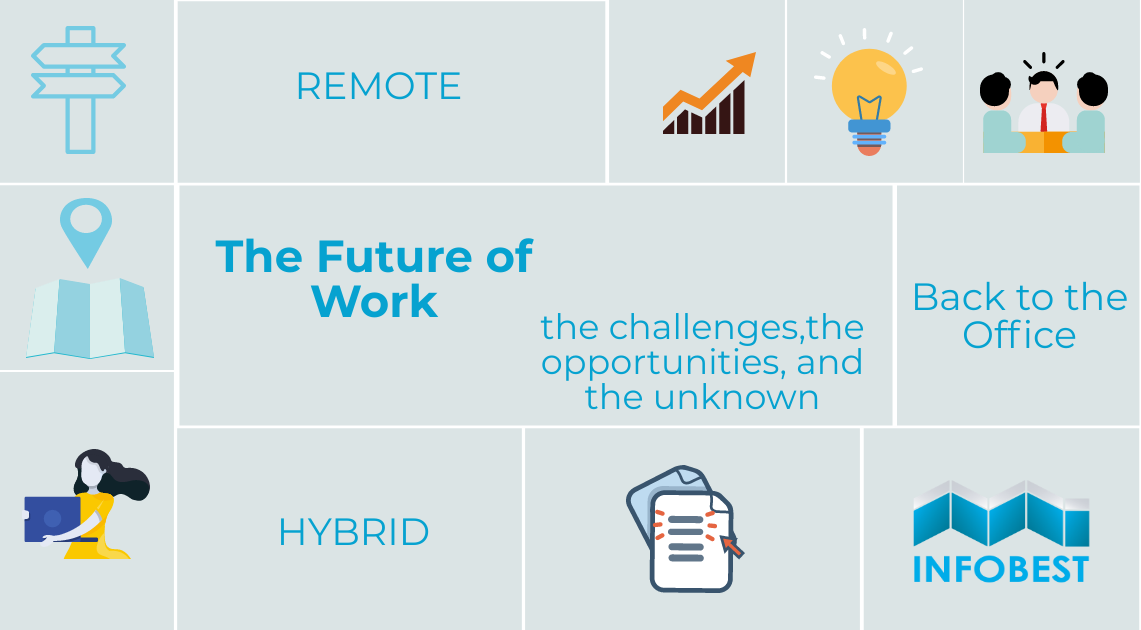Over the past year, the COVID-19 pandemic has turned upside down the way we work and interact with each other. Traditional work models have been replaced with hybrid or fully remote ways of working. As a result, most of us have spent this past year separated from our colleagues and workplace. Nowadays, virtual meetings have become the new norm of greeting each other and working together as a team every day.
2020 was a year that asked a lot from all of us, and 2021 may not be that different. But one thing seems certain for most business owners: the changes that this pandemic has forced into the workplace model will not be disappearing any time soon.
In the IT sector, companies have embraced a work-from-home model quite rapidly. By already having in place much of the needed infrastructure and the work-from-home culture long before the pandemic, many IT companies have managed to organize themselves much better than other sectors. But of course, even IT companies have faced many challenges in the past year. It is one thing to have employees that are occasionally working from home, and another thing to have your entire team working remotely in a pandemic scenario for months.
The future of work in post-pandemic time
After one year into the pandemic and fully remote-work mode, we can now see the light at the end of the tunnel. In fact, more and more IT companies are starting to prepare or adopt new work strategies for their employees. From returning to the office in a safe environment to having a hybrid of fully remote work strategy, companies are trying to find the best option from their team and business.
To get a better view of how IT companies are preparing for the foreseeable future and what challenges they overcome in the past year we prepared a short interview with Infobest’s management team.
After one year of fully remote work, we can now draw some conclusions about the overall productivity of the team. Has productivity increase or decrease in the past year?
„According to our figures, during this one year, we do not see an objective global change in productivity, neither an increase nor a decrease. However, based on the subjective impressions of management, team leaders, and other colleagues, our understanding is that observed office behaviors amplified while working remotely. This means that controlling remote work is more difficult for team leaders, due to two situations: they need to keep a closer look on the work done by colleagues with a more relaxed approach to work, while also keeping a close eye on our more eager colleagues, ensuring that they don’t overwork themselves.”
What is the biggest disadvantage of having the full team working remotely?
„For us, the worst part of people working remotely is that we seem to be losing an important part of what Infobest means. Our company is not just about working well, having satisfied customers and doing “the job”. We see our colleagues as more than just people who can help one another with work tasks. We like to do other things together, we like to have breaks together, we eat together, we joke when people are around us and they joke back, we go out sometimes after work for fun activities, we visit each other and know one another’s families. This was all lost in the past year, and we really hope to get it back.”
What opportunities has remote work opened up for both employees and management?
„Employees now have the opportunity to arrange their work schedule as conveniently as possible, as long as the team can still function properly. Some people work better in the morning, some in the afternoon, and remote work allowed our colleagues to achieve a better overlap between team members since travel time is now out of the picture. Most of our colleagues were happy that they gained extra time for non-work activities, because of the aforementioned commute time.
For management, the main gain with successful remote work was that we can now work with people from other cities, even countries, without a need for them to relocate to Timisoara. The relocation was an important blocking issue in hiring new talent in the past.”
Strategies for the future: fully remote, hybrid, or back to the office? What type of working model will Infobest apply in the post-pandemic future?
„For sure, it will not be as it was before. So, if by back to the office you mean “as in 2019”, it will not be back to the office. Fully remote is not an option we take into consideration, because it is not something for Infobest; we need more personal connections than what fully remote can offer. This leaves the hybrid system, but this can actually mean anything. Our view of the hybrid system is that people will be allowed to work fully in the office if they so choose, but they will also be able to work remotely as much as they need, provided that the team and the project are not affected negatively by the remote work.”
How the 2022 workplace will look for Infobest?
„By 2022, there will be more of us than today. We’ll be back in the office, an office where we will need more space for our colleagues than before the pandemic, so we will probably expand it. People will come to the office frequently, but they will work from home more than they used to in the past. We will take advantage of the infrastructure changes that took place, and we will continue to improve the infrastructure so that teams can work together effectively regardless of how many are physically in the office, and how many are at home. We will have the best of both worlds.”
2020 has resulted in the largest work experiment of our time. The Covid-19 pandemic has proven that we can work effectively and be productive even from the comfort of our home. On the other hand, losing face-to-face interactions with colleagues and managing a full team remotely has brought challenges for both management and employees.
„One of the most difficult challenges most our colleagues had to face during this forced remote work period, overlapped with many close-downs at the city or country level, was the complete or partial lack of human contact. As we know, humans are social, they are not meant to exist, grow, and thrive alone, in isolation from others. There is plenty of research showing this, for all people, regardless of family background, education, race, culture, or age. Trying to help our colleagues get by this very difficult period, we employed a few approaches. We encouraged teams to use video connections, instead of just audio during their daily work (we bought new webcams for everyone). We had breaks together, such as remote coffee breaks, where we would actively not work, together with our colleagues. We organized remote game evenings, similar to the ones we used to have in the office; yes, it’s not like the real thing, but it was fun, and every bit helps. Most importantly, we defined and implemented, together with our friends from Occupational Health Services, an encompassing six-month program targeting well-being at the workplace, including stress management, available for anyone in the company; this program will now continue, and we will probably continue offering it, as long as there is demand. We will continue to try and find new ways to keep everyone as happy and healthy as possible, while we wait for the chance to get back to the office.” – says Gabriel Fischmann, Infobest Romania Operations Manager.
The global pandemic, driven by necessity rather than by choice, has reshaped the traditional work models and accelerated the future of work in many industries. As companies are preparing for the post-pandemic time, one thing is clear: the future of work will not look the same.

